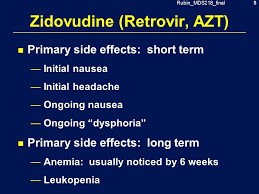The practical nurse (PN) reports that a client who has a fingerstick glucose of 35 mg/dL (1.94 mmol/L) is alert and diaphoretic. Which action should the charge nurse take?
Reference Ranges
- Glucose [Reference Range: 0 to 50 years: 74 to 106 mg/dL (4.1 to 5.9 mmol/L)]
Collect a blood sample for hemoglobin Alc.
Give the client a glass of orange juice.
Notify the healthcare provider.
Assess client for polyuria and polyphagia.
The Correct Answer is B
In this situation, the client has a fingerstick glucose level of 35 mg/dL (1.94 mmol/L) and is alert but diaphoretic. The charge nurse should take the following action:
Give the client a glass of orange juice.
A glucose level of 35 mg/dL (1.94 mmol/L) is considered significantly low (hypoglycemia), and the client's symptoms of diaphoresis indicate that the low glucose level is likely causing the symptoms. Providing the client with a glass of orange juice or another source of fast-acting carbohydrate is appropriate to quickly raise the blood sugar level and alleviate the symptoms of hypoglycemia.
Collecting a blood sample for hemoglobin A1c (HbA1c) is not necessary in this acute situation. HbA1c reflects the average blood glucose level over the past 2-3 months and is used to assess long-term glycemic control in clients with diabetes. It does not provide immediate information or guide immediate interventions for acute hypoglycemia.
Notifying the healthcare provider is not the first action to take in this situation. The client's low glucose level can be promptly addressed by administering a source of fast-acting carbohydrate, such as orange juice. If the client's symptoms persist or worsen despite appropriate intervention, or if there are other concerning factors, then notifying the healthcare provider would be appropriate.
Assessing the client for polyuria (excessive urination) and polyphagia (excessive hunger) is important in the overall management of diabetes, but it is not the immediate action to take in this acute situation of hypoglycemia. The priority at this time is to address the low blood sugar level and relieve the client's symptoms.
Nursing Test Bank
Naxlex Comprehensive Predictor Exams
Related Questions
Correct Answer is A
Explanation
A) Correct- Zidovudine is an antiretroviral medication used in the treatment of HIV infection.
One of the potential side effects of zidovudine is hematological toxicity, including anemia (low red blood cell count) and neutropenia (low white blood cell count). The appearance of pinpoint, red, round spots on the skin could be indicative of petechiae, which are small hemorrhages caused by the leakage of blood into the skin. Petechiae can occur due to low platelet counts, a
component of the complete blood count (CBC). Monitoring the complete blood count is important for clients receiving zidovudine to identify any potential adverse effects on blood cell counts. Anemia and neutropenia can increase the risk of infection, bleeding, and other complications. Therefore, any changes in blood cell counts, including the presence of petechiae, should be reported to the healthcare provider for further evaluation and management.
B) Incorrect- This is used to assess allergic reactions and is not specifically related to the appearance of petechiae.
C) Incorrect- A skin biopsy is typically performed to diagnose skin conditions or diseases and is not the primary assessment to evaluate the cause of petechiae.
D) Incorrect- Electromyography is a diagnostic test used to assess muscle and nerve function and is not relevant to the appearance of petechiae associated with zidovudine use.

Correct Answer is C
Explanation
Imbalanced Nutrition: less than body requirements would be the nursing problem with the highest priority for an adolescent with anorexia nervosa. Anorexia nervosa is characterized by a severe restriction of food intake leading to a significantly low body weight, which can have serious physical and psychological consequences. Therefore, addressing the client's malnutrition and promoting adequate nutrition intake is crucial to prevent further complications. Disturbed Body Image, Interrupted Family Processes, and Noncompliance with treatment regimen are important nursing problems to address, but they are secondary to the client's malnutrition.
Whether you are a student looking to ace your exams or a practicing nurse seeking to enhance your expertise , our nursing education contents will empower you with the confidence and competence to make a difference in the lives of patients and become a respected leader in the healthcare field.
Visit Naxlex, invest in your future and unlock endless possibilities with our unparalleled nursing education contents today
Report Wrong Answer on the Current Question
Do you disagree with the answer? If yes, what is your expected answer? Explain.
Kindly be descriptive with the issue you are facing.
